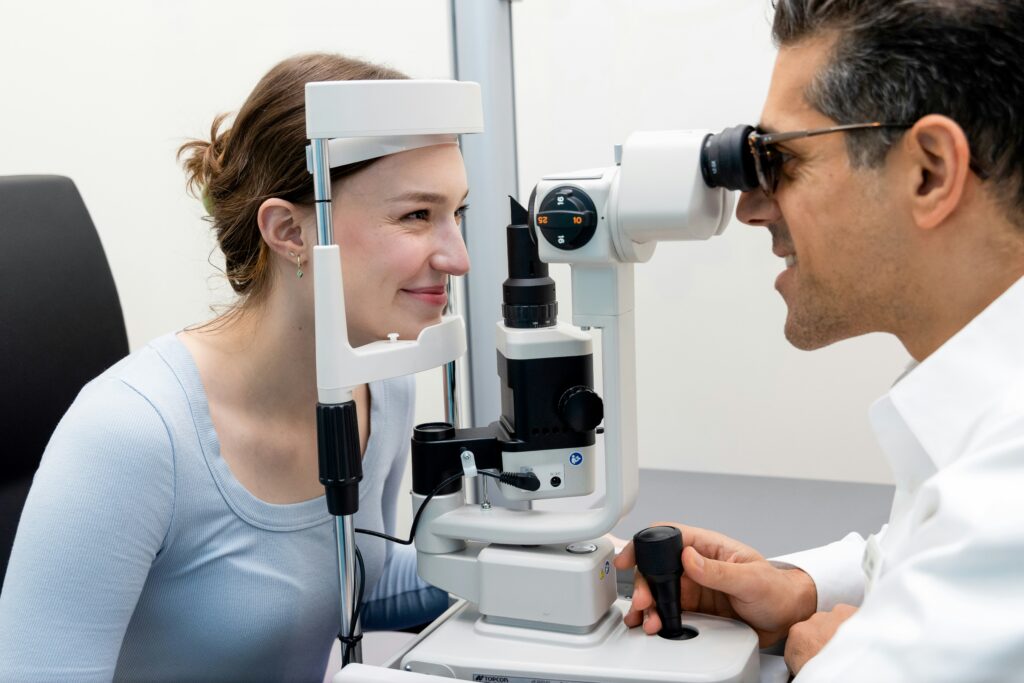Imagine waking up and having clear vision without needing to reach for glasses or insert contact lenses. For millions of people, that moment isn’t a dream. It’s the everyday reality after having LASIK.
LASIK (short for Laser-Assisted In Situ Keratomileusis) is one of the most common and successful procedures in vision correction. It’s quick, relatively painless, and offers life-changing results. But what exactly happens during LASIK, who’s it for, and why are so many people choosing it?

What LASIK Actually Does to Your Eyes
If you’ve worn glasses or contacts most of your life, you’re probably familiar with nearsightedness, farsightedness, and astigmatism. These are all caused by how light bends (or doesn’t bend properly) as it enters your eye. LASIK reshapes your cornea, the clear front surface of the eye, to help light focus correctly on the retina.
The process uses a highly precise laser to remove microscopic amounts of tissue from the cornea. That reshaping corrects the way your eye handles light. Once it’s done, you can often ditch the lenses entirely. The whole thing typically takes less than 30 minutes. Most people notice a more clear vision within 24 to 48 hours of LASIK eye care Boise, though healing continues for a few weeks.
The Real-World Impact of LASIK
So, what does this actually change in someone’s day-to-day life? For starters, it’s freedom. No more worrying about losing glasses on a trip. No more fogged-up lenses during winter. Say goodbye to dry eyes from contacts and the hassle of carrying around lens solution.
People also report better confidence. When you’re not hiding behind glasses or fussing with contacts, it can change how you feel about yourself. You might smile more in photos. You might feel more comfortable in social settings or even more confident at work.
Athletes and active people tend to love LASIK because it removes the inconvenience of gear. Running, swimming, or even just going to the gym gets a whole lot easier when you don’t have to think about how your vision is going to hold up.
It’s not just about convenience either. For many, it’s emotional. There’s a shift that happens when you can finally see clearly from the moment you open your eyes in the morning.
Who Can Get LASIK?
Not everyone is a candidate, and that’s important to know upfront.
Good candidates generally:
- Are over 18 – Vision needs to be fully developed
- Have stable vision – No major prescription changes for at least a year
- Have healthy eyes – No severe dry eye, corneal diseases, or infections
- Are not pregnant or nursing – Hormones can temporarily affect vision
That said, a thorough consultation is the only way to know for sure. Eye specialists look at your prescription, corneal thickness, general health, and lifestyle to help determine if LASIK is the right journey to your clear vision.
What It’s Like After the Procedure
Recovery is surprisingly quick, but there are a few things to expect in the days and weeks following.
Most people experience improvement within hours, and many can drive themselves to a follow-up appointment the very next day. There may be some mild discomfort, such as dryness or slight blurriness, but this typically fades quickly.
Your vision may fluctuate slightly during the healing period, especially in the first week or two. Doctors usually recommend taking it easy for a day or two, avoiding rubbing your eyes, and skipping makeup or contact sports for a short while.
Follow-up appointments are part of the package, ensuring everything is healing properly and your results are as expected.
The Long-Term Outlook
One of the biggest questions people have is how long does LASIK last? For most people, the results are permanent. Your eyes won’t “go back” to how they were before the procedure. That said, your eyes can still change naturally over time, especially with age. Things like presbyopia (age-related difficulty seeing up close) can still happen later in life.
The good news – clear vision IS possible? Even years after LASIK, many people still don’t need glasses for most activities. Some may choose reading glasses later on, but the freedom from daily vision correction tends to stick around.
The Financial Side of It
Let’s be honest. LASIK isn’t cheap. But it’s worth weighing the cost against what you’re currently spending on glasses, contacts, exams, and supplies over the years.
When you add it up, many people find that LASIK ends up being a cost-effective investment, especially considering the quality-of-life improvements that come with it.
Financing options are also commonly available, so it doesn’t necessarily have to be paid all at once. Still, make sure to choose a reputable, experienced provider, not just the cheapest one.
Common Misconceptions to Clear Up
There are a few myths that tend to pop up around LASIK. Let’s clear up a few.
- It’s painful – Most people feel only mild pressure during the procedure. Discomfort afterward is usually minimal and short-lived.
- It can make you blind – Complications are rare. Serious side effects are extremely uncommon when the procedure is done by a skilled professional.
- You can’t get it if you have astigmatism – Actually, LASIK can correct astigmatism in most cases.
- You’ll never need glasses again – While many don’t, some might still need them for specific tasks or later in life.
- It’s only for young people – Older adults can benefit too, provided their eyes are healthy and they’re a good candidate.
Worth the Hype?
LASIK has been around for decades, and in that time, it’s helped millions see clearly without relying on glasses or contacts. For those who qualify, it offers a real shift in daily life. Clear vision without anything between you and the world isn’t just a luxury. For many, it’s a long-awaited reality. If you’re tired of the daily routine of glasses and lenses, LASIK might be worth looking into. Because when your vision changes, so does everything else.
